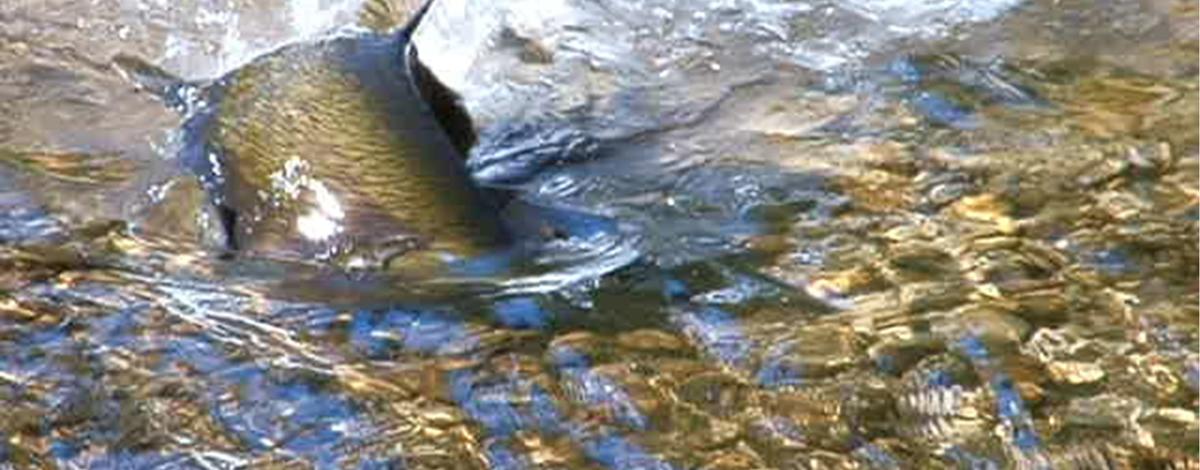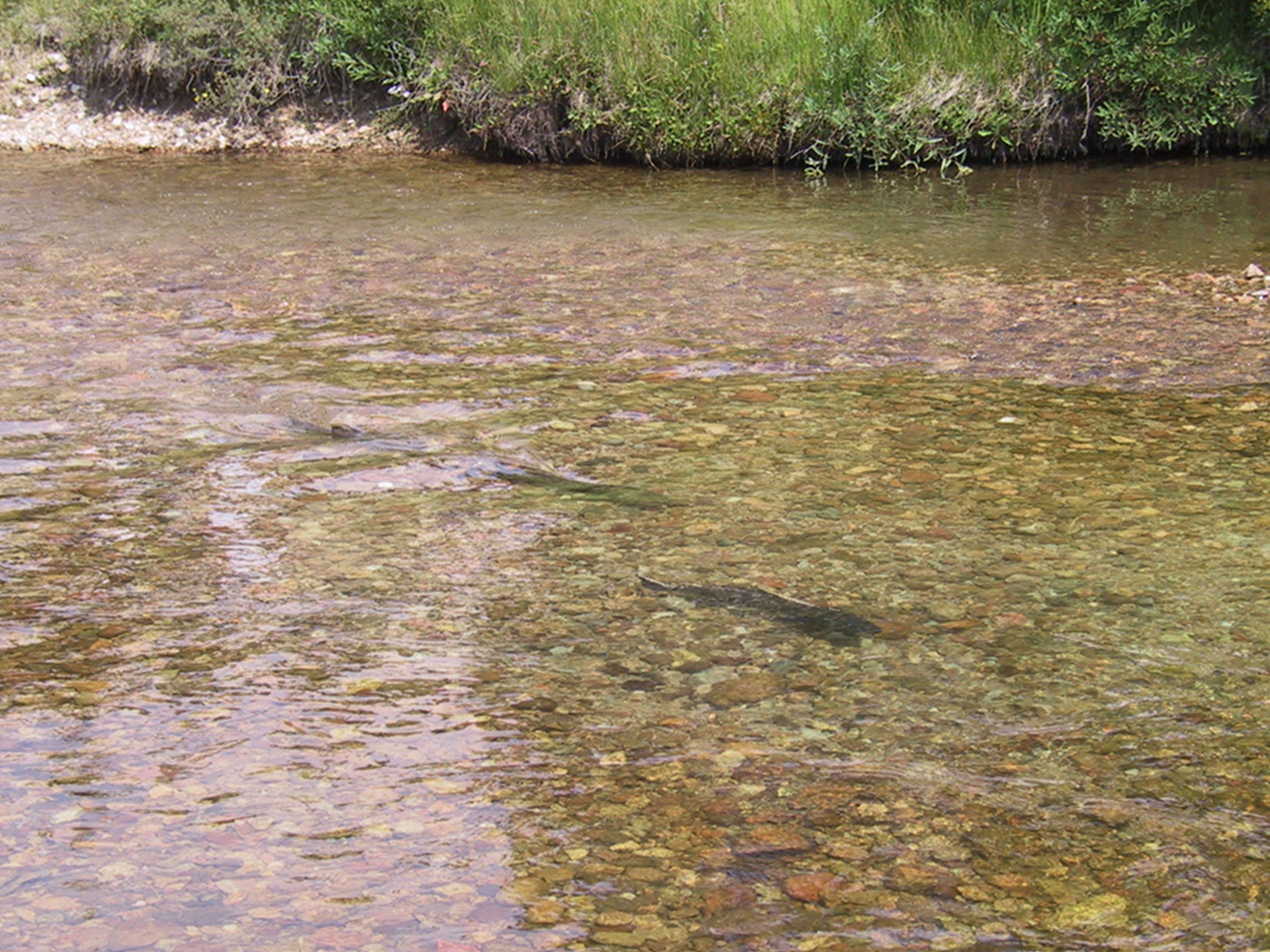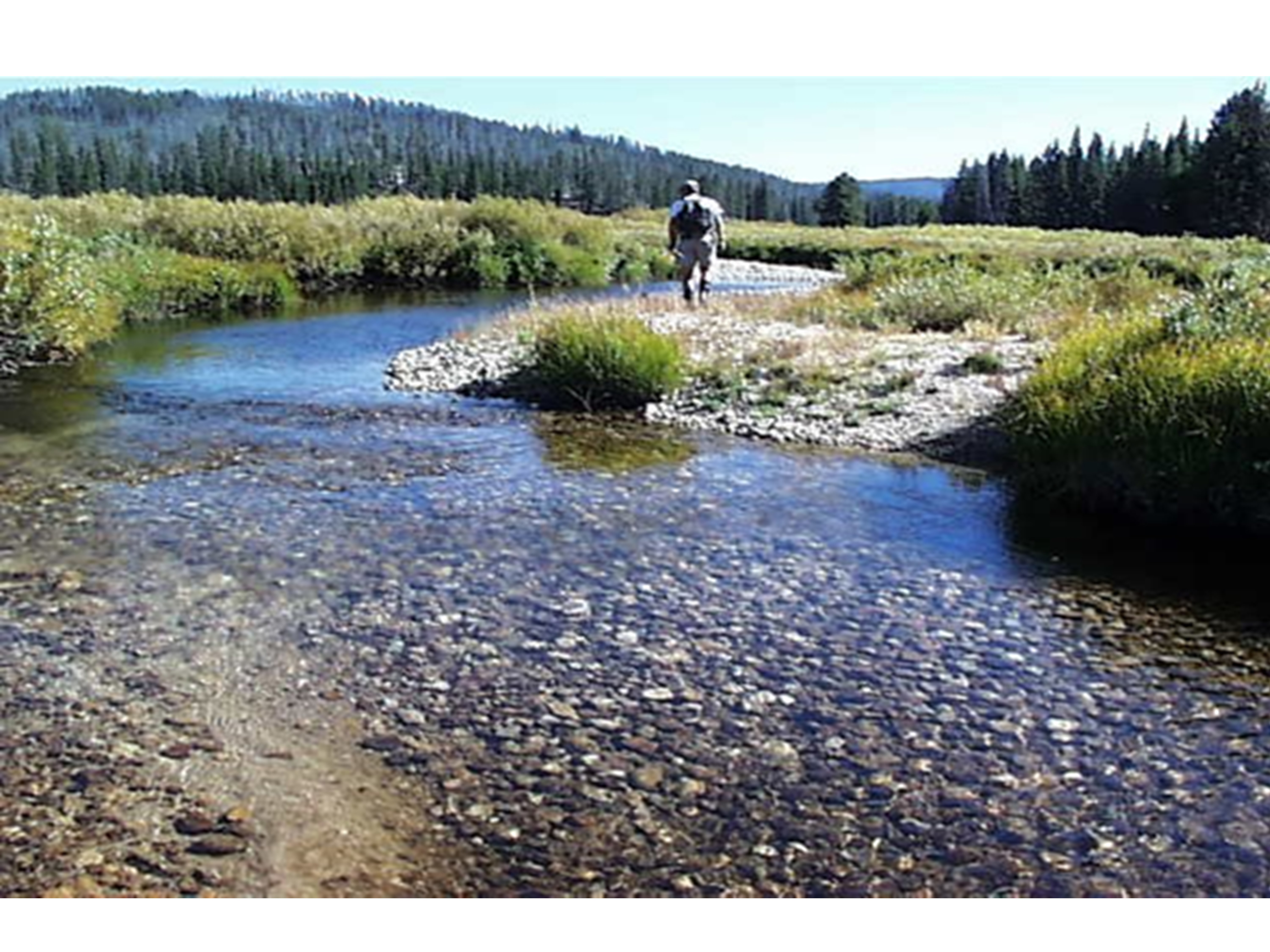That’s right- redd with two Ds. Another funny word that fish biologists use. In this blog post, I am talking about the nest where salmon, trout and steelhead lay their eggs in the gravel of a stream.
Every August and September in central Idaho’s high country, the returning salmon start cleaning their spawning streams. The word “redd” comes from the Scottish dialect, meaning “to put in order, to tidy, or to clear.” Female salmon do exactly that to prepare a good place to put their eggs.
When it comes time to spawn, female salmon will look for a spot with good gravel. “Good” gravel is free of mud and silt that can smother eggs and has the right sizes and shapes to incubate eggs and keep them safe, plus the right water speed to supply oxygen and keep eggs cool. Salmon will first dig a test pit with a few strokes of their tails, then slightly back over it. The theory is they are feeling the flow of water through the gravel with their fins because eggs need a good supply of clean, aerated water to develop properly. If the female likes the spot, they will dig further, excavating a deeper pit.
Male salmon don’t do any digging, but compete amongst each other, with the largest trying to drive off the other males. The salmon then spawn as the female expels her eggs into the pit. A properly dug pit holds the eggs and milt together, ensuring good fertilization. The female salmon moves just upstream and digs again, covering the eggs and starting the next egg pocket. As she digs, the current flushes dirt, debris, and smaller gravels downstream. After all the digging and sweeping, the redd looks like a clean spot in the stream with neatly sorted gravel. This keeps the egg pocket clean and creates a hump in the water, which flows through the gravel and into the egg pocket.



